|
|
Updated as per
AN ANNOTATED CHECKLIST OF THE SPHINGIDAE OF BOLIVIA, October 2007
Updated as per http://www.pybio.org/MACROGLOSSINAE.htm (Paraguay), October 2007
Updated as per More, Kitching and Cocucci's Hawkmoths of Argentina 2005, October, 2007
Upfated as per personal communication with Ezequiel Osvaldo Núñez Bustos (Argentina), Ocotber 2007
Updated as per The Known Sphingidae of Costa Rica, November 2007
Updated as per personal communication with Jose Monzon (Guatemala); May 2009
Updated as per French GUiana Systematics: Sphingidae; May 14, 2011
Updated as per personal communication with Sergio D. Ríos Díaz in CATÁLOGO DE LOS SPHINGIDAE (INSECTA: LEPIDOPTERA) DEPOSITADOS EN
EL MUSEO NACIONAL DE HISTORIA NATURAL DEL PARAGUAY; sent to me in July 2014 by Sergio D. Ríos Díaz.
Updated as per personal communication with Vadim Kroutov (Rio Monzon, Huanuco, Peru, male 52mm); February 22, 2015
|
Perigonia ilus
Boisduval, 1870
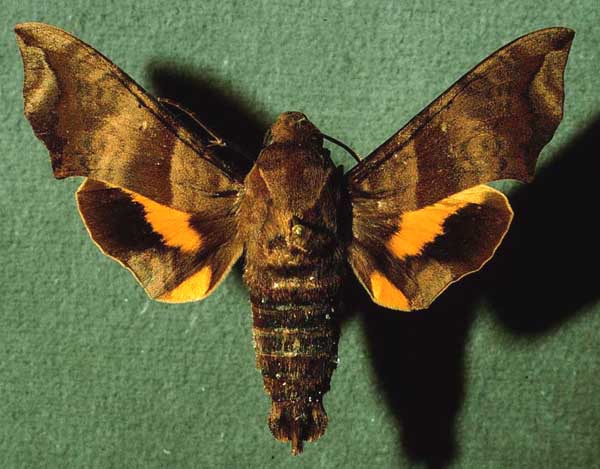
Perigonia ilus male courtesy of Dan Janzen.
This site has been created by
Bill Oehlke at oehlkew@islandtelecom.com
Comments, suggestions and/or additional information are welcomed by Bill.
TAXONOMY:
Family: Sphingidae, Latreille, 1802
Subfamily: Macroglossinae, Harris, 1839
Tribe: Dilophonotini, Burmeister, 1878
Genus: Perigonia Herrich-Schaffer, ]1854] ...........
Species: ilus Boisduval, 1870
|
MIDI MUSIC
.....It's a Wonderful World.....
copyright C. Odenkirk
ON.OFF
<bgsound src="world.mid" LOOP=FOREVER>
|
DISTRIBUTION:
Perigonia ilus (wingspan: 52mm(VK)-54-58mm),
moths fly in Honduras, the specimen type locality, and in
Costa Rica and Belize.
Eurides Furtado reports them from
Mato Grosso, Brazil. They fly as far south as southern Uruguay.
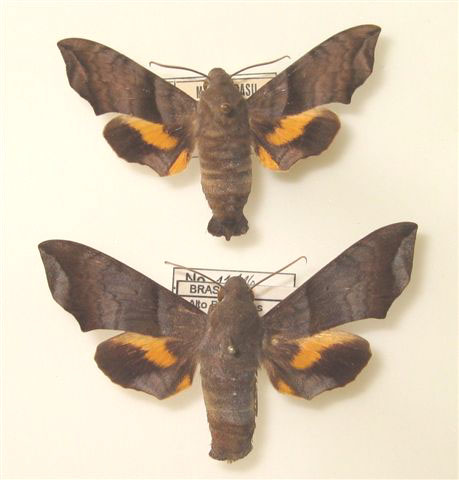
Perigonia ilus, Mato Grosso, Brazil, courtesy of Eurides
Furtado.
Mexico:
Belize: Corozol, Orange Walk, Cayo, Toledo;
Guatemala (JM);
Honduras;
El Salvador;
Nicaragua;
Costa Rica;
Panama;
Colombia;
Venezuela: Aragua, Bolivar, Carabobo,
Distrito Federal, Lara, Miranda, Monagas, Yaracuy;
French Guiana: Saint-Georges l'Oyopok;
Ecuador;
Peru: Huanuco: Rio Monzon;
Bolivia: La Paz, Santa Cruz;
Argentina: Misiones;
Paraguay: Alto Paraguay,
Boqueron, Presidente Hayes, Concepcion, San Pedro, Canindeyu,
Alto Parana, Cordillera, Central, Caazuagu. Paraguari, Guaira,
(probably Caazapa, Itapua (WO??));
Brazil: Mato Grosso; and
Uruguay;
at elevations form sea level to at least 1600m.
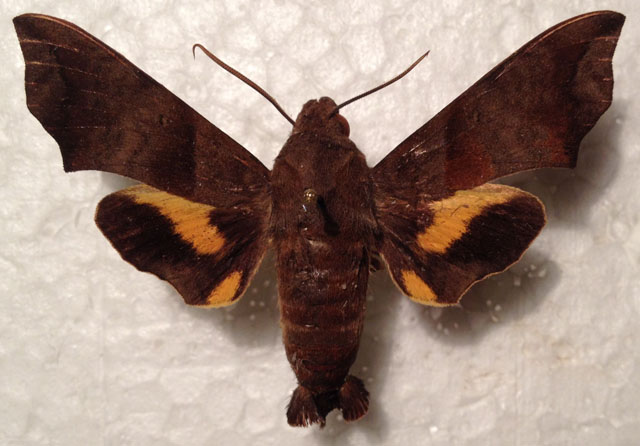
Perigonia ilus male, 52mm, Rio Monzon, Huanuco, Peru,
courtesy of Vadim Kroutov.
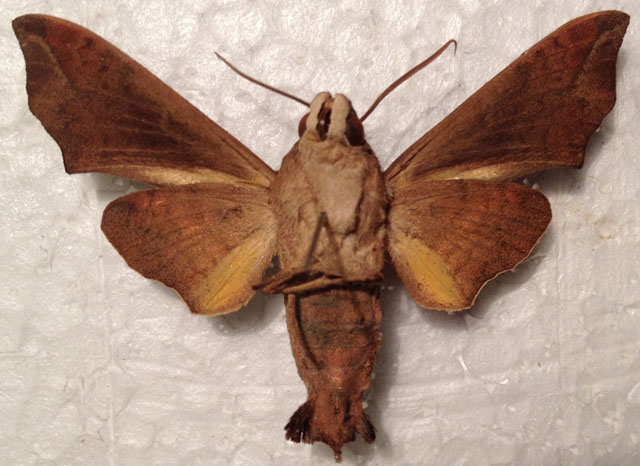
Perigonia ilus male (verso), 52mm, Rio Monzon, Huanuco, Peru,
courtesy of Vadim Kroutov.
"Until recently, both P. ilus and P. passerina were
treated as two of the many forms of the variable P. lusca.
However, both are now recognized as species. P. ilus can be
easily distinguished from the other two by the pale yellow anal patch
on the hindwing underside (greyish-buff in P. l. lusca and
P. passerina)." AN ANNOTATED CHECKLIST OF THE SPHINGIDAE OF BOLIVIA
Visit Perigonia ilus, Misiones, Argentina, courtesy/copyright
Ezequiel Osvaldo Núñez Bustos.
FLIGHT TIMES:
Perigonia ilus has been taken in
Costa Rica in all months of the year. March and October flights have been recorded in French Guiana.
ECLOSION:
Moths emerge from pupae in shallow underground chambers.
SCENTING AND MATING:Females call in
the males with a pheromone released from a gland at the tip of the
abdomen. Adults nectar at flowers.Here is a "pair that came to
the house light in copulation. Note that she is old
and worn, and he is very new and fresh. It was very hard to separate
them without tearing abdomens, even when newly killed and relaxed.
When they were flying, both had their wings going frantically."
Image and information courtesy of Dan Janzen |
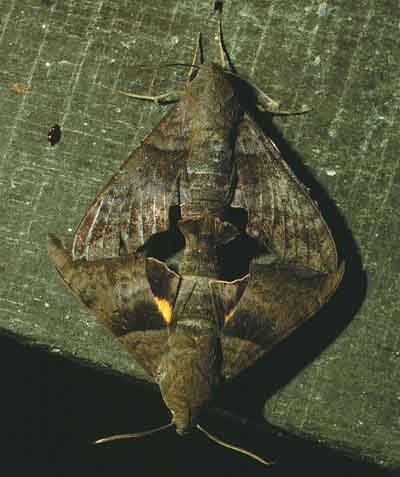 |
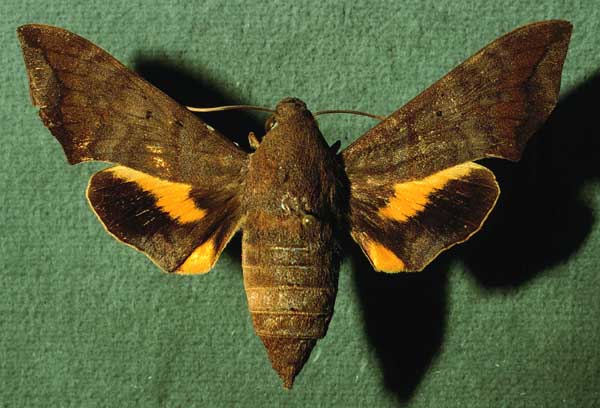
Perigonia ilus female courtesy of Dan Janzen.
EGGS, LARVAE, PUPAE:
Larvae have a yellow tail horn, a green body and a dark blue stripe down the
back. There are several color morphs. Larvae feed on
Calycophyllum candidissimum and Guettarda macrosperma
of the Rubiaceae family.
Ezequiel Bustos writes, "This is one of the most common species in
Misiones province, Argentina, especially because the larvae feed in
the Ilex paraguariensis plantations (yerba mate), the national
drink of Argentina."
Ilex paraguariensis is a species of holly (family
Aquifoliaceae) native to subtropical South America. People
steep the dry leaves (and twigs) in hot water, rather than boiling
water. The beverage is a slightly less potent stimulant than coffee
and it is much gentler on the stomach.
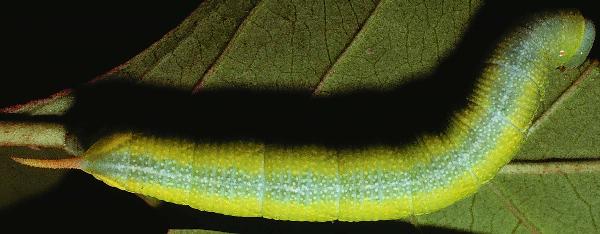

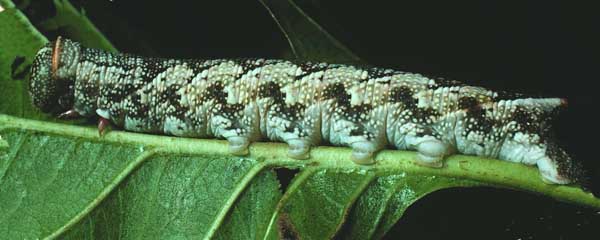

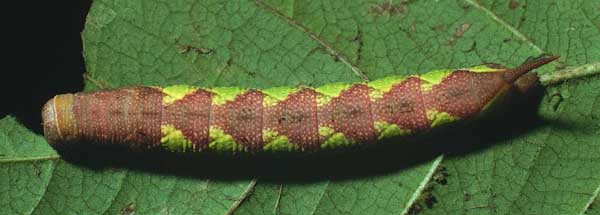
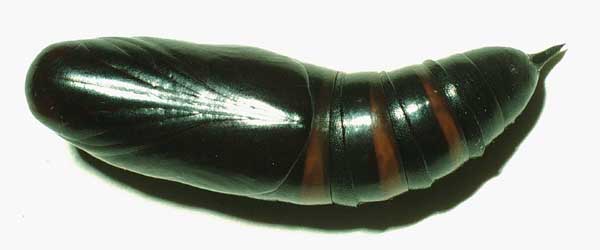
Moths emerge in as
few as twelve days after pupation.
Larvae are subject to parasitization by
Thyreodon maculipennis subfamily Ophioninae, family Ichneumonidae.
Return to U. S. A. Table
Return to Sphingidae Index
Return to Dilophonotini Tribe
Goto Central American Indices
Goto South American Indices
Use your browser "Back" button to return to the previous page.
This page is brought to you by
Bill Oehlke and the
WLSS. Pages are on space rented from Bizland. If you would like
to become a "Patron of the Sphingidae Site", contact Bill.
Please send sightings/images to Bill. I will do my best to respond to
requests for identification help.
Enjoy one of nature's wonderments: Live
Saturniidae (Giant Silkmoth) cocoons.
 | 
Show appreciation for this site by clicking on flashing butterfly to the left.
The link will take you to a page with links to many insect sites. |













